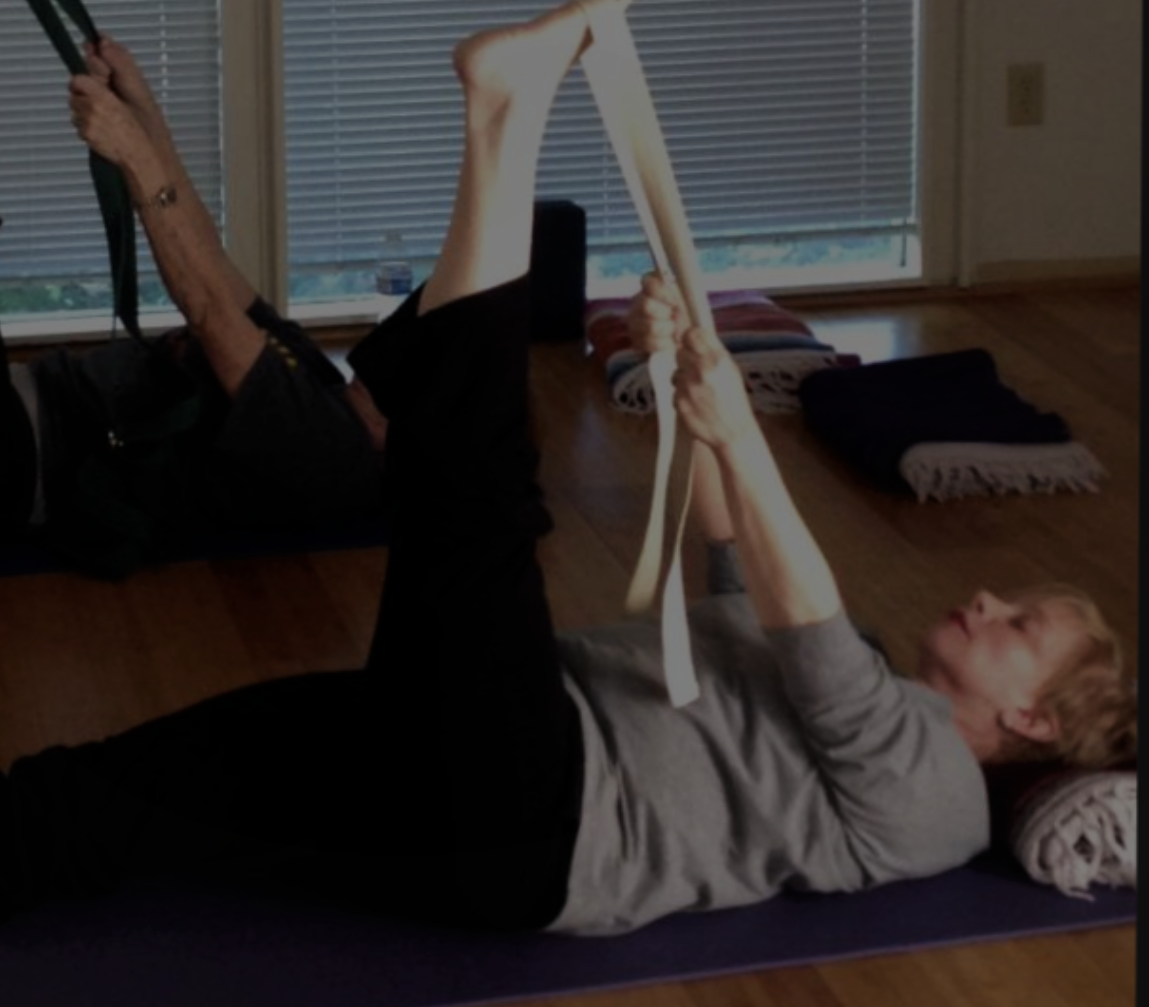

During a recent virtual yoga class using Zoom, I lost my network connection.
It happened just as we were beginning a hamstring stretch on the first side.
I quickly pivoted, grabbed my phone, and sent a text to one of the students asking her to continue with “strap stretch” on side one, move on to side two at the appropriate time, and share the plan with the other students.
“Strap stretch” is code for supta padangusthasana, or Reclining Hand to Big Toe pose. Students who have worked with me since online classes began in March 2020, and/or for many years prior to the surge of COVID, probably think of me as sounding like a broken record (repeat, repeat, repeat) when it comes to deconstructing and explaining the intricacies of the pose. But the result is that the long list of “dos” and “don’ts” is probably imprinted on many of their brains by now.
“Hooray!”
I include the pose often in classes. And I stress what’s required for safe, effective, and optimal benefits. Check out this link for a brief clinic on the pose.
Lying down in a pose allows you to release tension more easily because most of the body is supported by the floor. And if the goal is to lengthen the hamstrings, letting go is a must. Muscles don’t relax through effort, aggression, or force.
And consider this: There are three hamstrings behind each thigh. Six hamstrings, total! And they are some of the longest, bulkiest muscles in the body. There is not another group of muscles that can be characterized in this same way. So, it’s not a surprise that they are a major player in the fitness and function of the body.
I know the Sanskrit yoga pose names can be a mouthful. And I understand that many folks exhaust brain bandwidth just getting down to the brass tacks of the pose and are not that interested in learning Sanskrit. So, over the years, my students know exactly where we’re headed with “strap stretch” because with tight hamstrings being a very common problem, using a yoga strap (a very useful prop) is the ticket for getting the most out of the pose.
Given their dominance in the body, hamstrings affect knees, hips, lower backs, balance, strength, and posture. And, we know that as we age, muscles will shorten and become brittle if we don’t preserve and maintain their flexibility.
Vigilance is required.
Frequent stretching is a must.
And, keeping hamstrings flexible is essential.
Namasté
P.S. I was able to use my sophisticated tech skills (I wish!) to restore the connection and resume teaching just as the class was getting ready for “strap stretch” on side two. And, because of my friendly “hounding,” they all did just fine without me.
Louise Applebome, 68, is a Certified Yoga Instructor in Dallas. After “retiring” from a vibrant and varied professional career, she became a yoga teacher. She teaches all her classes on Zoom right now and accepts students, young or older, from wherever they are, both geographically and in their pursuit of a yoga practice. Louise will help you stay fit and flexible, and release tension, aches & pains from the body…and the mind. Her yoga studio in Dallas is del norte yoga and you can reach out to her at [email protected].